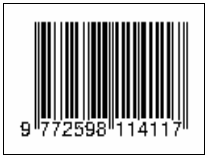Livelihood Strategy of Lake Fishing Community in Guguk Malalo Village, West Sumatra Province, Indonesia
Abstract
Lake Singkarak is a livelihood source for people who live on the banks, especially for fishing activities. Unfortunately, this fishing sector shows a decline in fish catches since 1996 and significantly in 2007-2016. This paper presents the results of a study that specifically reveals the current state of the biophysical and environmental conditions of Lake Singkarak and explores the types of fishermen's livelihood strategies in relation to access to their livelihood assets at the current biophysical and environmental conditions of Lake Singkarak. This research framework adopts the Sustainable Livelihood Framework by applying a calculation of the index value/ratio of each livelihood asset. The results of this study indicate that changes in the biophysical conditions and the environment of the lake have played a role in influencing access to fishermen's livelihood assets at the study site and have implications for decreasing sources of livelihood from the lake. It was found that presently there are 6 types of livelihood strategies that are carried out by fishermen to be able to fulfill their living needs, namely Type B: Fishermen who carry out fisheries intensification and extensification (6.12%), Type C: Fishermen who have diversified their economic activities either in agriculture or non-agriculture (34.69%) , Type E: Fishermen who carry out fisheries intensification and extensification and also diversification (44.9%), Type F: Fishermen who carry out intensification and extensification of fishing and also temporary migration (2.04%), Type G: Fishermen who diversified their economic activities also temporary migration (4, 08%) and Type H: Fishermen who carry out fishing intensification/extensification, diversification and also temporary migration (8.16%). In relation to access to livelihood assets, it turns out that human resource assets are the main assets that influence the alternative choices of fishermen's livelihood strategies. The alternative type of strategy for diversifying economic enterprises, both in agriculture and non-agriculture, is the most widely chosen option besides alternative intensification and extensification of fishing in lakes.
Keywords
Full Text:
PDFReferences
Indonesian government. 2004. Law No. 31 of 2004
concerning Fisheries. Republic of Indonesia
State Gazette 2004, No. 31. State Secretariat.
Jakarta.
Zid, M and Alkhudri, A. T. 2016. Rural Sociology:
Theoritization and
Development of Rural Studies in Indonesia. PT Raja
Grafindo Persada: Jakarta.
Barret, C.B. and A. T. Reardon. 2000. Asset, Activity, and
Income Diversification Among African
Agriculturalist: Somer Practical Issues. Project
report to USAID BASIS CRSP.
Yuerlita. 2011. Livelihood Features of Small Scale
Fishing Communities: A case from Singkarak
Lake, West Sumatra, Indonesia. International
Journal of Environment and Rural
Development. 1 (2) : pp. 94-101.
http://www.iserd.net/?page_id=85
Arifin, B. 2005. Institutional constraints and
opportunities in developing environmental
service markets: lessons from institutional
studies on RUPES in Indonesia. ICRAF
Southeast Asia Regional Office, Indonesia.
DFID. 1999. Sustainable livelihoods guidance sheets.
Department for International Development.
London
Masrial.2018. Indepth Interview. Nagari Guguk Malalo
Rabumas. 2018. Indepth Interview. Nagari Guguk
Malalo
Mulyadi. 2018. Indepth Interview. Nagari Guguk Malalo
Refbacks
- There are currently no refbacks.








